Accepted Scientific Name: Deuterocohnia brevifolia (Griseb.) M.A.Spencer & L.B.Sm.
Bradea 6(16): 144 (1992)
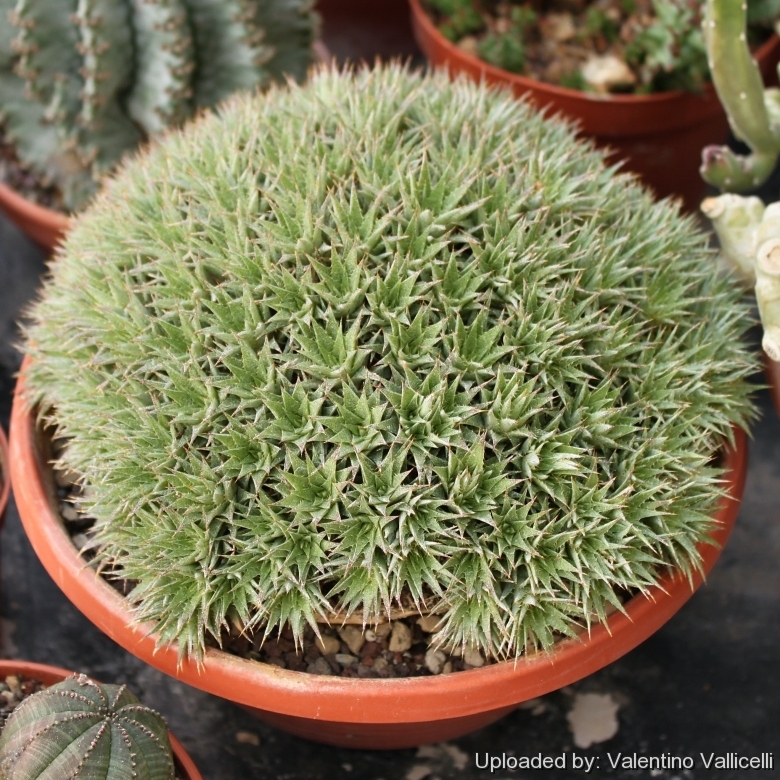
Deuterocohnia brevifolia subs. chlorantha Photo by: Valentino Vallicelli
Collection Palmero.
Origin and Habitat: Argentina in the region of Tucuman and southern Bolivia.
Habitat: Abromeitiella brevifoliaSN|14680]]SN|14680]] f. chlorantha is a dense, cushion-like plant, clambering over the rocks in a very arid area. In its environments it is watered perhaps only twice a year, finding all of its moisture from the air itself. The only water it ever gets is in the form of sea fog.
Synonyms:
See all synonyms of Deuterocohnia brevifolia
back
Accepted name in llifle Database:Deuterocohnia brevifolia (Griseb.) M.A.Spencer & L.B.Sm.Bradea 6(16): 144 (1992)Synonymy: 13
back
Description: Deuterocohnia brevifoliaSN|14678]]SN|14678]] f. chlorantha (Abromeitiella chloranthaSN|14677]]SN|14677]]) is a low densely caespitose perennial cushion forming sub-succulent herb, a very peculiar terrestrial bromeliad that forms a neat, ultimately large and compact rounded 'mound' up to 90 cm in diameter with hundreds of small narrowly standing rosettes of leaves.
Rosettes: Very small, with individuals reaching from 3.5 to 6.5 cm across.
Leaves: Densely arranged, spreading, linear-lanceolate, triangular or ovate-triangular, up to 22 mm long and about 5 to 13 mm wide at the base, 2 to 3 mm thick, hard, fleshy, deep green and greyscaly, at the margins with small spines at the base or even spineless, and with sharp tips.
Flowers: Small and insignificant, solitary or several, lateral, out of rosettes, cylindrical, greenish to intensely green.
Blooming season: Early winter.
Note: Deuterocohnia brevifoliaSN|14678]]SN|14678]] f. chlorantha has been a controversial subject: A. chlorantha was a very acceptable title for many years, and in fact is still upheld by some. It is now considered to be part of A. brevifolia.
Subspecies, varieties, forms and cultivars of plants belonging to the Deuterocohnia brevifolia group
 Deuterocohnia brevifolia (Griseb.) M.A.Spencer & L.B.Sm.: Leaves with few marginal teeth. Distribution: Argentina (Catamarea, Tucuman, Jujuy& Salta) and Bolivia (Valle de Tambo).
Deuterocohnia brevifolia (Griseb.) M.A.Spencer & L.B.Sm.: Leaves with few marginal teeth. Distribution: Argentina (Catamarea, Tucuman, Jujuy& Salta) and Bolivia (Valle de Tambo).  Deuterocohnia brevifolia subs. chlorantha (Speg.) W.Schultze-Motel: is a smaller form with leaves with many marginal teeth. Distribution: Argentina in the region of Tucuman and southern Bolivia.
Deuterocohnia brevifolia subs. chlorantha (Speg.) W.Schultze-Motel: is a smaller form with leaves with many marginal teeth. Distribution: Argentina in the region of Tucuman and southern Bolivia.
Bibliography: Major references and further lectures
1) "The Plantsman", New Perspectives Pub., 1990
2) Hermann Jacobsen, "Abromeitiella to Euphorbia", Blandford Press, 1960
3) Barbara Segall, "Botanica: the illustrated A-Z of over 10,000 garden plants and how to cultivate them", Mynah, 1997
4) Debra Brown Folsom, Huntington Botanical Gardens, "Dry climate gardening with succulents", Pantheon Books, 14/Mar/1995
5) Country Life, Volume 192 1998
6) Clive Innes "Complete Handbook of Cacti and Succulents", Van Nostrand Reinhold Company, 01/Dec/1981
7) Wikipedia contributors. "Deuterocohnia brevifolia." Wikipedia, The Free Encyclopedia. Wikipedia, The Free Encyclopedia, 11 Dec. 2016. Web. 29 Sep. 2017
 Deuterocohnia brevifolia subs. chlorantha Photo by: Valentino Vallicelli
Deuterocohnia brevifolia subs. chlorantha Photo by: Valentino Vallicelli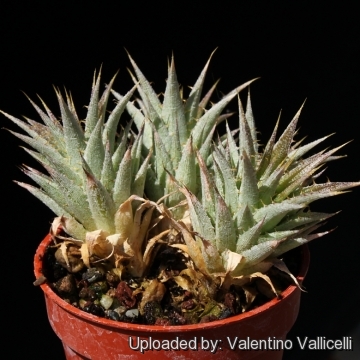 Deuterocohnia brevifolia subs. chlorantha Photo by: Valentino Vallicelli
Deuterocohnia brevifolia subs. chlorantha Photo by: Valentino Vallicelli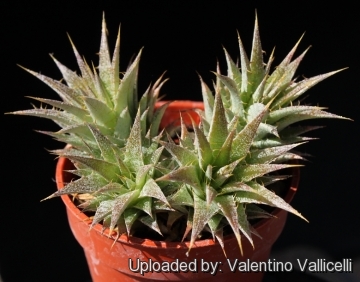 Deuterocohnia brevifolia subs. chlorantha Photo by: Valentino Vallicelli
Deuterocohnia brevifolia subs. chlorantha Photo by: Valentino Vallicelli Deuterocohnia brevifolia subs. chlorantha Photo by: Valentino Vallicelli
Deuterocohnia brevifolia subs. chlorantha Photo by: Valentino Vallicelli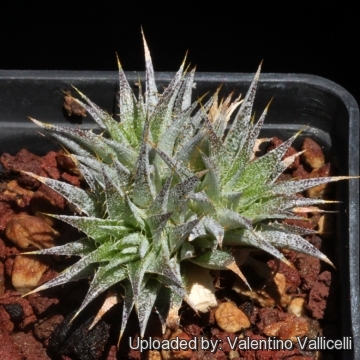 Deuterocohnia brevifolia subs. chlorantha Photo by: Valentino Vallicelli
Deuterocohnia brevifolia subs. chlorantha Photo by: Valentino Vallicelli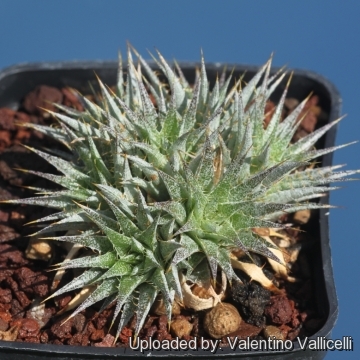 Deuterocohnia brevifolia subs. chlorantha Photo by: Valentino Vallicelli
Deuterocohnia brevifolia subs. chlorantha Photo by: Valentino VallicelliCultivation and Propagation: Grow it like succulents in in full sun to light shade and well drained soil. They are slow growing and Plants very drought tolerant. They should be watered regularly especially during summer months, keep dry in winter. It is probably one of the cold hardiest of the bromeliads, but detesting winter wet on its foliage, proves difficult to keep outside.
Propagation: Deuterocohnia brevifoliaSN|14678]]SN|14678]] ssp. chlorantha is propagated by division and from seed when available.















